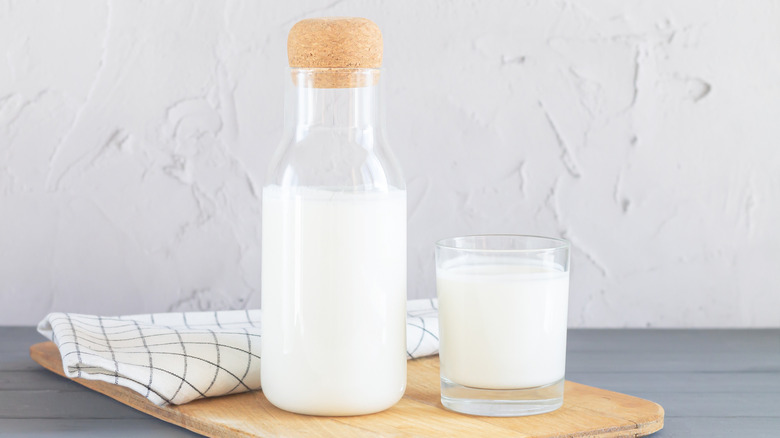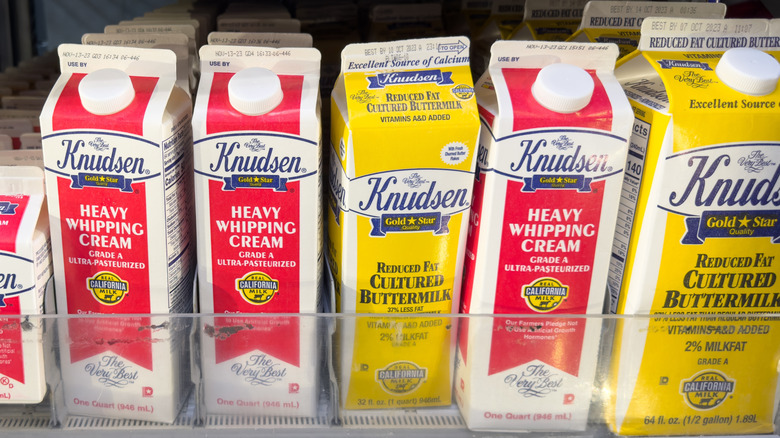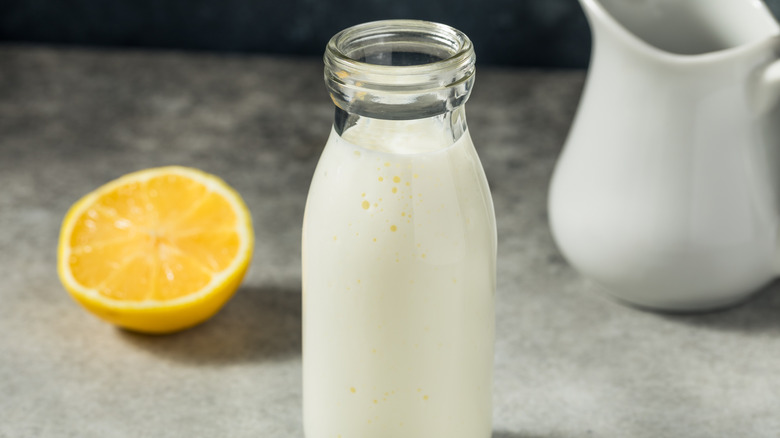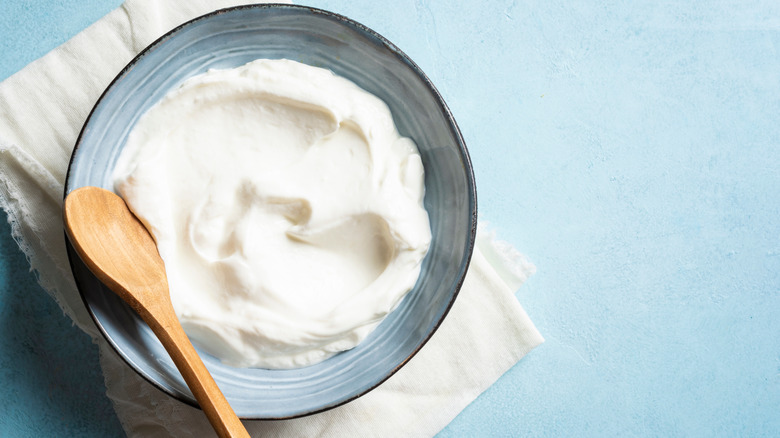What's The Best Substitute For Buttermilk? (It's Not Milk And Lemons)
In the old timey days of milkmaids and wooden churns, buttermilk was the substance left behind after cream was turned into butter. Since refrigerators had yet to be invented, the cream was left to sit out at ambient temperatures, where it would attract wild bacteria cultures that made the butter more flavorful and gave the leftover buttermilk a pleasantly tangy taste. In the early 20th century, a modernized buttermilk was developed that was thicker, richer, and, thanks to industrial pasteurization equipment, far less likely to give people food poisoning. The "new and improved" buttermilk no longer had anything to do with cream or butter — it was cultured milk that had been fermented with lactic acid bacteria, much like yogurt and kefir.
But you didn't come here looking for a whole history on buttermilk. You're here looking for a substitution, because your recipe requires buttermilk and, seriously, who actually keeps buttermilk in the house? You might even be consulting a few different sites for potential substitutions, and some resources will tell you to stir up some milk and vinegar and then let it sit for a few minutes. But now that you've read the first paragraph, you will forever know that the milk-and-vinegar substitution is a lie! A lie that will lead to subpar biscuits and pancakes and fried chicken and oh, the horror of it all.
If you're making a recipe that calls for buttermilk, then it's a recipe that shouldn't disappoint you. You deserve better, so you're going to do it right.
What is buttermilk?
Buttermilk is what happens when milk is mixed not with acid, but with cultures of lactic acid bacteria, which are the good, or probiotic, type of bacteria. The bacteria feed on the milk's naturally occurring sugar (lactose), converting it into lactic acid. As the bacteria reproduce, they produce more acid, and acid causes the casein proteins to curdle.
But, unlike curdled milk that has separated and soured, once the cultured milk begins to thicken, it is then rapidly cooled to slow down the bacteria to a virtual standstill. If it was allowed to continue thickening, it would become yogurt.
Why you shouldn't use milk and lemon juice to make buttermilk
When you stir milk with something like vinegar or lemon juice, you cause a chemical reaction between the former's proteins and the latter's acid. Milk is made up of two different proteins: casein and serum. Casein is made up of negatively charged molecules, and vinegar contains hydrogen molecules that are positively charged. Once mixed, those molecules find each other quick and start rubbing their electrons all over each other, and the casein proteins run off on their own to form into big, white clumps called curds. The serum proteins, also known as whey, stay in the milk that's left behind.
The ol' milk-and-vinegar trick gives you milk that has curdled, and there is an illogical belief that curdled milk and buttermilk are interchangeable. When milk has curdled it's because it's gone bad, and bad milk is sour just like buttermilk is. The difference is that curdled milk is thin and disgusting, and cultured milk is thick and not.
The best way to make buttermilk
If you don't have buttermilk, stir together one part plain yogurt with two parts milk. Not only will you replicate the flavor nearly perfectly, you'll also replicate buttermilk's luscious consistency, which is absolutely essential if you're making baked goods, pancakes, sauces, or dressings. In marinades and brines (like the ones for fried chicken), the lactic acid is essential for tenderizing the meat's proteins — something that acidified, soured milk just cannot do.
But wait, there's more! I know that when it comes to recipe substitutions, sometimes you need a substitution for the substitution. If you don't have regular yogurt, you can use three parts milk to one part plain Greek yogurt (which is yogurt that's been drained of extra water), or sour cream (which is essentially yogurt that's made out of cream, not milk). Both will create the thick, creamy consistency your recipe requires, with ample amounts of pleasant tang.



